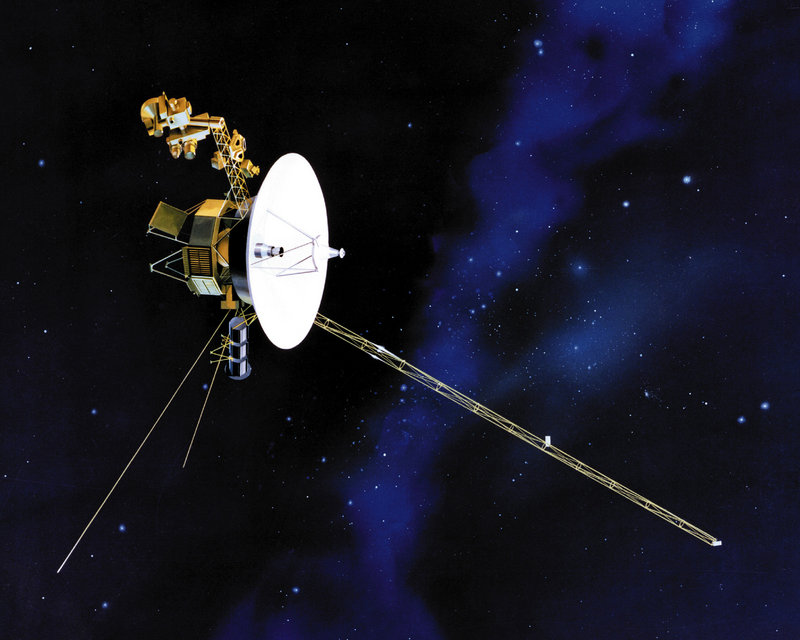WASHINGTON – The edge of the solar system has no edge, it turns out. It has a fuzzy transitional area, not quite “solar system” and not quite “interstellar space.”
This basic fact of our star’s environment has been discovered by Voyager 1, one of the most remarkable spaceships ever built. Our premier scout of deep space, Voyager 1 is currently 11 billion miles from the sun, beaming data to Earth as it scoots at 38,000 mph toward the constellation Ophiuchus.
Scientists had assumed that Voyager 1, launched in 1977, would have exited the solar system by now. That would mean crossing the heliopause and leaving behind the vast bubble known as the heliosphere, which is characterized by particles flung by the sun and by a powerful magnetic field.
The scientists’ assumption turned out to be half-right. On Aug. 25, Voyager 1 saw a sharp drop-off in the solar particles, also known as the solar wind. At the same time, there was a spike in galactic particles coming from all points of the compass. But the sun’s magnetic field still registers, somewhat diminished, on the spacecraft’s magnetometer. So it’s still in the sun’s magnetic embrace, in a sense.
This unexpected transitional zone, dubbed the “heliosheath depletion region,” is described in three new papers about Voyager 1 published online Thursday by the journal Science.
“There were some surprises,” said Ed Stone, who has been the lead scientist of NASA’s Voyager program since 1972. “We expected that we would cross a boundary and leave all the solar stuff behind and be in all the interstellar stuff. It turned out, that’s not what happened.”
How big is this transitional zone at the edge of the solar system?
“No one knows,” said Stone, 77, a professor of physics at the California Institute of Technology and the former head of NASA’s Jet Propulsion Laboratory, Voyager’s home base.
“It’s not in any of the models. We don’t know. It could take us a few more months, it could take us several more years to get through it.”
The sun’s magnetic field deflects much of the radiation coming from other parts of the galaxy that was created in supernova explosions. Interstellar space is not a benign environment. The heliosphere’s features make life easier for blue planets such as Earth.
Voyager 1 can be counted as one of the great exploratory craft in history, and none has gone farther, nor cruised steadily at such astonishing speed. Two Voyager probes were launched in 1977. Both spaceships carried a gold-plated record crammed with digital information about human civilization, including mathematical formulas, an image of a naked man and woman, whale vocalizations, and clips of classical and rock ‘n’roll music. (The famous joke was that the aliens listened to the record and replied, “Send more Chuck Berry.”)
Send questions/comments to the editors.



Success. Please wait for the page to reload. If the page does not reload within 5 seconds, please refresh the page.
Enter your email and password to access comments.
Hi, to comment on stories you must . This profile is in addition to your subscription and website login.
Already have a commenting profile? .
Invalid username/password.
Please check your email to confirm and complete your registration.
Only subscribers are eligible to post comments. Please subscribe or login first for digital access. Here’s why.
Use the form below to reset your password. When you've submitted your account email, we will send an email with a reset code.